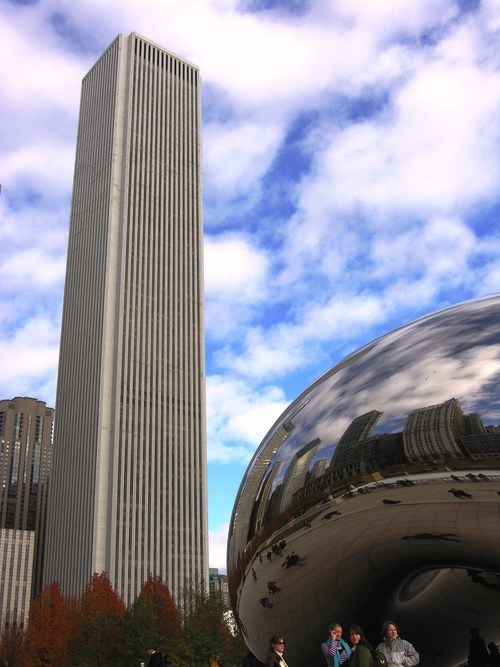
[On the lake]
As part of a new project, I herewith present the first ‘Book By Quote’: An attempt to subjectively summarise a book by the quotes I found worthwhile to mark, to remember. Be aware that the quotes as such, aren’t a real unbiased ‘objective’ summary; most often I heartily advise to read the book yourself..!
So, now then; Seth Godin’s The Icarus Deception, Penguin Books, december 2012, ISBN 9780670922925
Industrialists have made hubris a cardinal sin but conveniently ignored a far more common failing: settling for too little. It’s far more dangerous to fly too low than too high, because it feels safe to fly low. We settle for low expectations and small dreams and guarantee ourselves less than we are capable of. By flying too low, we shortchange not only ourselves but also those who depend on us or might benefit from our work. We’re so obsessed about the risk of shining brightly that we ‘ve traded in everything that matters trying to avoid it. (p.2)
The safety zone has changed, but your comfort zone has not. Those places that felt safe – the corner office, the famous colleague, the secure job – aren’t. You’re holding back, betting on a return to normal, but in the new normal, your resistance to change is no longer helpful. (p.3)
Creating ideas that spread and connecting the disconnected are the two pillars of our new society, and both of them require the posture of the artist. (p.5)
It took a hundred years for us to be brainwashed into accepting the industrial system as normal and safe. It is neither, not for long. (p.6)
Competence is no longer scarce, either. We have too many good choices – there’s an abundance of things to buy and people to hire. What’s scarce is trust, connection, and surprise. These are three elements in the work of a succesful artist. (p.10)
The simplest plan is to keep it all, to embrace what worked before, and to hide, mostly to hide, from the open vistas of the new postrevolutionary world. It’s so easy to do, and if the world moves slowly enough, you can even do it succesfully for a while. No longer. (p.21)
Capitalism is driven by failure, the failure of new ideasto catch on or the failure of the organization that fails when it is beaten by new competition. Industrialisation is about eliminating the risk of failure, about maintaining the status quo, and about cementing power. (p.27)
After nearly a century of effort, the industrial system has created the worker-proof factory. (p.28)
Within a generation, the Homeric myths of bravery and guts were supplanted by the workaday unbrave myths of Leave it to Beaver and Archie Bunker. Sure, there will be superheroes in the comic books hidden under our beds, but these heroes were never meant to be us – they were the idle pastimes of boys who hadn’t yet come to realise that the army has no room for Captain America and that, yes, in fact, Spider Man couldn’t get a job. Our parents bought us Batman underoos and Superman T-shirts, but it was clearly stated: Yo can pretend to be a hero, but you are not one, and you will grow up to be an obedient member of society. (p.75)
The fear has been shifted. It went from the wild animal’s fear of survival, the fear of the dark and of predators, to the industrialist-invented fear of noncompliance, fear of authority, fear of standing out. The industrialist offers us a trade. We can trade in our loneliness for the embrace of the mob and trade our innate fears for a steady paycheck. We can trade our yearning for something great in exchange for the safety of knowing that we will be taken care of. In return, all he asks is that we give up our humanity. (p.79)
Until we have a humility shortage, then, the real problem is this: We continue to fly too low. We’re so afraid of demonstrating hubris, so afraid of the shame of being told we flew too high, so paralyzed by the fear that we won’t fit in, hat we buy into the propaganda and don’t do what we are capable of. (p.90)
Our economy has worked overtime to emphasize and reward the lizard. … The rest of us,the story goes, are drones, the worker bees that are unentitled to the benefits reserved for the few. (p.101)
“We want talent”, they say, “as long as that talent is true, productive, and predictable. We want talent if talent means more product per dollar, more effort per day, more of what we think we’re paying for. …” ( p.114)
But lying low is now a recipe for ending up far outside your safety zone. The industrial economy sold you on the bargain that avoiding attention meant avoiding shame and that obedience led to stability. (p.125)
The kind of art I’m describing doesn’t seek to please the masses. The masses (by definition) aren’t pleased by the new. They are pleased by what others think. Harry Potter’s first fans were enthralled by the art that J.K. Rowling challenged them with. The next hundred million readers embraced a mass cultural phenomenon, not an unproven book from an unknown author.
Your goal as an artist is to move the audience of your choice. (p.128)
And so a car guy learn to tell the difference between a car design that’s going to sell and one that’s not. And a cop learns to recognise the symptoms of behaviour that might lead to trouble. Until they don’t. At some point, we stop seeing patterns and start looking for shortcuts. … We profile because it speeds up, but mostly we profile because it’s safer. (pp.148-149)
The problem with labels is that once they’re applied, it’s impossible to see what lies beneath. When the world changes, then, our labels cease to function and we’re blind to the opportunities that are presenting themselves. (p.149)
It’s best to get as many people as possible into a room. And then go somewhere else. (Jason Fox, p.173)
The industrial economy won’t disappear, but the agenda will increasingly be set by those who make connections, not widgets. (p.175)
And this is why art is rarely for the masses. The masses don’t appreciate the flash of originality and are happy to buy the copy or the knock-off. But that’s fine, because the masses matter less than they ever did before. The masses are interested in what’s popular, and the weird, the ones who get the joke, have more influence than ever in bringing ideas to them. We’re all the masses sometime. We’re part of the masses when we don’t appreciate nuance, when we merely want what is good enough, when price matters more than impact. The explosion of niches, of diverse tastes amplified, of weirdness, means that the masses are easier to ignore now. (p.179)
The simple reason that creativity, leadership, and brainstorming books and courses fail is that people don’t want them to work. We’ve been brainwashed into becoming afraid of art. (p.179)
We think we’re being safe and smart and conservative and avoiding flying too close to the sun. But all the generator is doing is pushing us closer and closer to the waves, so that we’re flying too low, daring too little, and blowing our best chance ever to matter. (p.183)
The pain-free life will elude you. You can work to smooth out all the edges, to eliminate all risk, and to be sure that everyone you encounter likes you. (I hope that seeing this in writing helps you see the absurdity of that mission.) But in the unlikely event that you accomplish this, you’ll soon be beset by the knowledge that it won’t last long at that it’s only a matter of time before someone comes along and ruins the entire thing. (p.188)
Freedom isn’t the ability to do whatever you want. It is the willingness to do whatever you want. (p.189)
In short, you can screw up with impuny as long as you screw up like everybody else. (David Putnam, p.203)
We’ve built a postdeception society, one where our future is created by those who replace the status quo, not those who defend it. (p.208)
It may take seven years for a fast-moving Internet company to become an overnight success. (p.211)
The best art is made by artists who don’t know how it’s going to work out in the end. The rest of the world is stuck with the brainwashed culture that the industrialists gave us, the culture of fear and compliance. But culture is a choice. … Others have always done that art, always chosen that culture of hope, but you haven’t done it enough (’too risky’, the lizard says), because you’ve been held back by a need for proof, by a reliance on assurance, and by the fear of humiliation. (p.218)















